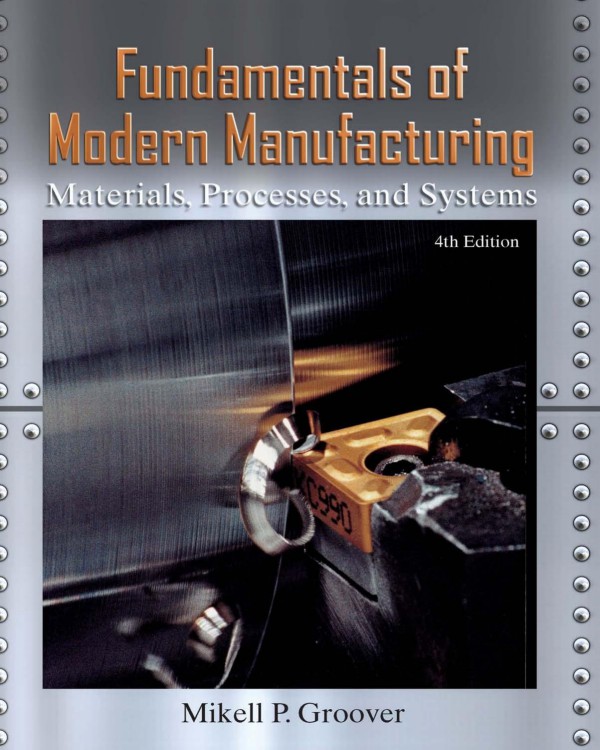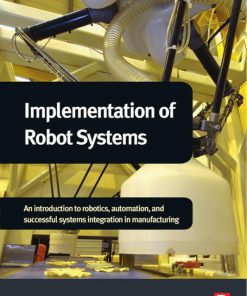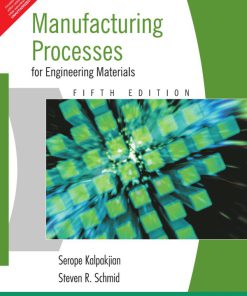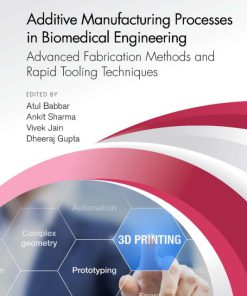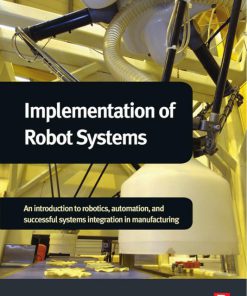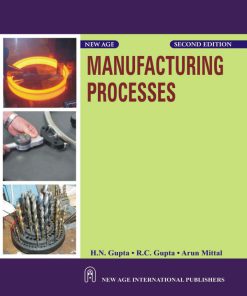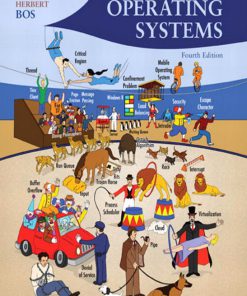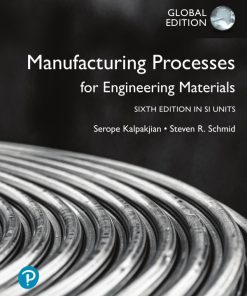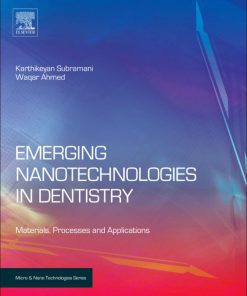Fundamentals of Modern Manufacturing Materials Processes and Systems 4th edition by Mikell Groover ASIN B003X6YMEI
$50.00 Original price was: $50.00.$25.00Current price is: $25.00.
Authors:Mikell P. Groover , Series:Mechanical engineering [42] , Tags:Technology & Engineering; Industrial Engineering; General , Author sort:Groover, Mikell P. , Ids:9781118231463 , Languages:Languages:eng , Published:Published:Sep 2012 , Publisher:Wiley , Comments:Comments:Engineers rely on Groover because of the book’s quantitative and engineering-oriented approach that provides more equations and numerical problem exercises. The fifth edition introduces more modern topics, including new materials, processes and systems. End of chapter problems are also thoroughly revised to make the material more relevant. Several figures have been enhanced to significantly improve the quality of artwork. All of these changes will help engineers better understand the topic and how they apply it in the field.
Fundamentals of Modern Manufacturing: Materials, Processes, and Systems 4th edition by Mikell P. Groover – Ebook PDF Instant Download/Delivery. B003X6YMEI
Full download Fundamentals of Modern Manufacturing: Materials, Processes, and Systems 4th Edition after payment
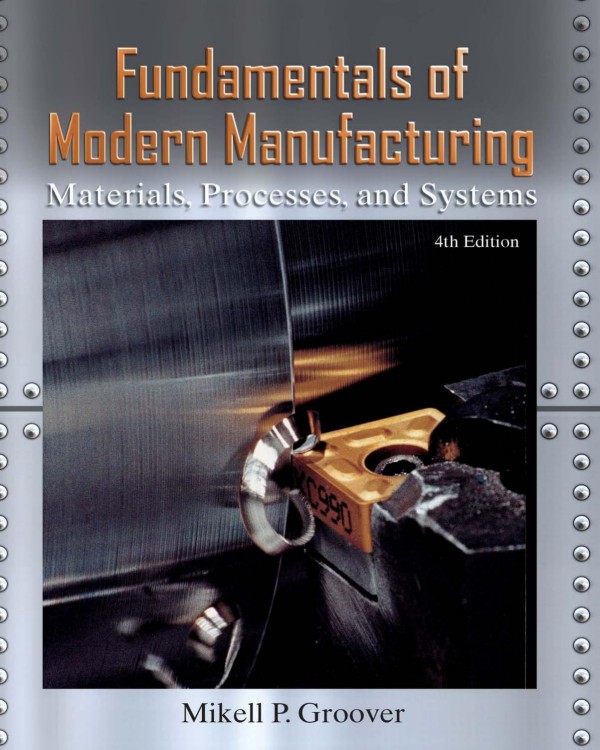
Product details:
ASIN: B003X6YMEI
Author: Mikell P. Groover
Fundamentals of Modern Manufacturing: Materials, Processes, and Systems 4th Table of contents:
1. Introduction and Overview of Manufacturing
1.1 What Is Manufacturing?
1.2 Materials in Manufacturing
1.3 Manufacturing Processes
1.4 Production Systems
1.5 Manufacturing Economics
Part I: Material Properties and Product Attributes
-
The Nature of Materials
2.1 Atomic Structure and the Elements
2.2 Bonding between Atoms and Molecules
2.3 Crystalline Structures
2.4 Noncrystalline (Amorphous) Structures
2.5 Engineering Materials -
Mechanical Properties of Materials
3.1 Stress–Strain Relationships
3.2 Hardness
3.3 Effect of Temperature on Properties
3.4 Fluid Properties
3.5 Viscoelastic Behavior of Polymers -
Physical Properties of Materials
4.1 Volumetric and Melting Properties
4.2 Thermal Properties
4.3 Mass Diffusion
4.4 Electrical Properties
4.5 Electrochemical Processes -
Dimensions, Surfaces, and Their Measurement
5.1 Dimensions, Tolerances, and Related Attributes
5.2 Conventional Measuring Instruments and Gages
5.3 Surfaces
5.4 Measurement of Surfaces
5.5 Effect of Manufacturing Processes
Part II: Engineering Materials
-
Metals
6.1 Alloys and Phase Diagrams
6.2 Ferrous Metals
6.3 Nonferrous Metals
6.4 Superalloys -
Ceramics
7.1 Structure and Properties of Ceramics
7.2 Traditional Ceramics
7.3 New Ceramics
7.4 Glass
7.5 Some Important Elements Related to Ceramics -
Polymers
8.1 Fundamentals of Polymer Science and Technology
8.2 Thermoplastic Polymers
8.3 Thermosetting Polymers
8.4 Elastomers
8.5 Polymer Recycling and Biodegradability -
Composite Materials
9.1 Technology and Classification of Composite Materials
9.2 Metal Matrix Composites
9.3 Ceramic Matrix Composites
9.4 Polymer Matrix Composites
Part III: Solidification Processes
-
Fundamentals of Metal Casting
10.1 Overview of Casting Technology
10.2 Heating and Pouring
10.3 Solidification and Cooling -
Metal Casting Processes
11.1 Sand Casting
11.2 Other Expendable-Mold Casting Processes
11.3 Permanent-Mold Casting Processes
11.4 Foundry Practice
11.5 Casting Quality
11.6 Castability and Casting Economics
11.7 Product Design Considerations -
Glassworking
12.1 Raw Materials Preparation and Melting
12.2 Shaping Processes in Glassworking
12.3 Heat Treatment and Finishing
12.4 Product Design Considerations -
Shaping Processes For Plastics
13.1 Properties of Polymer Melts
13.2 Extrusion
13.3 Production of Sheet and Film
13.4 Fiber and Filament Production (Spinning)
13.5 Coating Processes
13.6 Injection Molding
13.7 Compression and Transfer Molding
13.8 Blow Molding and Rotational Molding
13.9 Thermoforming
13.10 Casting
13.11 Polymer Foam Processing and Forming
13.12 Product Design Considerations -
Processing of Polymer Matrix Composites and Rubber
14.1 Overview of PMC Processing
14.2 Open-Mold Processes
14.3 Closed-Mold Processes
14.4 Other PMC Shaping Processes
14.5 Rubber Processing and Shaping
14.6 Manufacture of Tires and Other Rubber Products
Part IV: Particulate Processing of Metals and Ceramics
-
Powder Metallurgy
15.1 Characterization of Engineering Powders
15.2 Production of Metallic Powders
15.3 Conventional Pressing and Sintering
15.4 Alternative Pressing and Sintering Techniques
15.5 Powder Metallurgy Materials and Economics
15.6 Product Design Considerations in Powder Metallurgy -
Processing of Ceramics and Cermets
16.1 Processing of Traditional Ceramics
16.2 Processing of New Ceramics
16.3 Processing of Cermets
16.4 Product Design Considerations
Part V: Metal Forming and Sheet Metalworking
-
Fundamentals of Metal Forming
17.1 Overview of Metal Forming
17.2 Material Behavior in Metal Forming
17.3 Temperature in Metal Forming
17.4 Strain Rate Sensitivity
17.5 Friction and Lubrication in Metal Forming -
Bulk Deformation Processes In Metal Working
18.1 Rolling
18.2 Forging
18.3 Extrusion
18.4 Wire and Bar Drawing -
Sheet Metalworking
19.1 Cutting Operations
19.2 Bending Operations
19.3 Drawing
19.4 Equipment and Economics for Sheet-Metal Pressworking
19.5 Other Sheet-Metal-Forming Operations
19.6 Sheet-Metal Operations Not Performed on Presses
19.7 Bending of Tube Stock
Part VI: Material Removal Processes
-
Theory of Metal Machining
20.1 Overview of Machining Technology
20.2 Theory of Chip Formation in Metal Machining
20.3 Force Relationships and the Merchant Equation
20.4 Power and Energy Relationships in Machining
20.5 Cutting Temperature -
Machining Operations and Machine Tools
21.1 Machining and Part Geometry
21.2 Turning and Related Operations
21.3 Drilling and Related Operations
21.4 Milling
21.5 Machining Centers and Turning Centers
21.6 Other Machining Operations
21.7 Machining Operations for Special Geometries
21.8 High-Speed Machining -
Cutting-Tool Technology
22.1 Tool Life
22.2 Tool Materials
22.3 Tool Geometry
22.4 Cutting Fluids -
Economic and Product Design Considerations In Machining
23.1 Machinability
23.2 Tolerances and Surface Finish
23.3 Machining Economics
23.4 Product Design Considerations in Machining -
Grinding and Other Abrasive Processes
24.1 Grinding
24.2 Related Abrasive Processes -
Nontraditional Machining and Thermal Cutting Processes
25.1 Mechanical Energy Processes
25.2 Electrochemical Machining Processes
25.3 Thermal Energy Processes
25.4 Chemical Machining
25.5 Application Considerations
Part VII: Property Enhancing and Surface Processing Operations
-
Heat Treatment of Metals
26.1 Annealing
26.2 Martensite Formation in Steel
26.3 Precipitation Hardening
26.4 Surface Hardening
26.5 Heat Treatment Methods and Facilities -
Surface Processing Operations
27.1 Industrial Cleaning Processes
27.2 Diffusion and Ion Implantation
27.3 Plating and Related Processes
27.4 Conversion Coating
27.5 Vapor Deposition Processes
27.6 Organic Coatings
27.7 Porcelain Enameling and Other Ceramic Coatings
27.8 Thermal and Mechanical Coating Processes
Part VIII: Joining and Assembly Processes
-
Fundamentals of Welding
28.1 Overview of Welding Technology
28.2 The Weld Joint
28.3 Physics of Welding
28.4 Features of a Fusion-Welded Joint -
Welding Processes
29.1 Arc Welding
29.2 Resistance Welding
29.3 Oxyfuel Gas Welding
29.4 Other Fusion-Welding Processes
29.5 Solid-State Welding
29.6 Weld Quality
29.7 Weldability and Welding Economics
29.8 Design Considerations in Welding -
Brazing, Soldering, and Adhesive Bonding
30.1 Brazing
30.2 Soldering
30.3 Adhesive Bonding -
Mechanical Assembly
31.1 Threaded Fasteners
31.2 Rivets and Eyelets
31.3 Assembly Methods Based on Interference Fits
31.4 Other Mechanical Fastening Methods
31.5 Molding Inserts and Integral Fasteners
31.6 Design for Assembly
Part IX: Special Processing and Assembly Technologies
- Additive Manufacturing
- Processing of Integrated Circuits
- Electronics Assembly and Packaging
- Microfabrication Technologies
- Nanofabrication Technologies
Part X: Manufacturing Systems
- Automation Technologies For Manufacturing Systems
- Integrated Manufacturing Systems
Part XI: Manufacturing Support Systems
- Process Planning and Production Control
- Quality Control and Inspection
People also search for Fundamentals of Modern Manufacturing: Materials, Processes, and Systems 4th:
mikell p groover fundamentals of modern manufacturing
groover fundamentals of modern manufacturing
fundamentals of modern manufacturing 6th edition
what are the characteristics of modern manufacturing
modern manufacturing process
You may also like…
eBook PDF
Manufacturing Processes 2nd edition by Gupta, Gupta, Arun Mittal ISBN 8122427359 97881224273596
eBook PDF
Modern Operating Systems 4th Edition by Andrew Tanebaum, Herbert Bos ISBN 013359162X 9780133591620

